



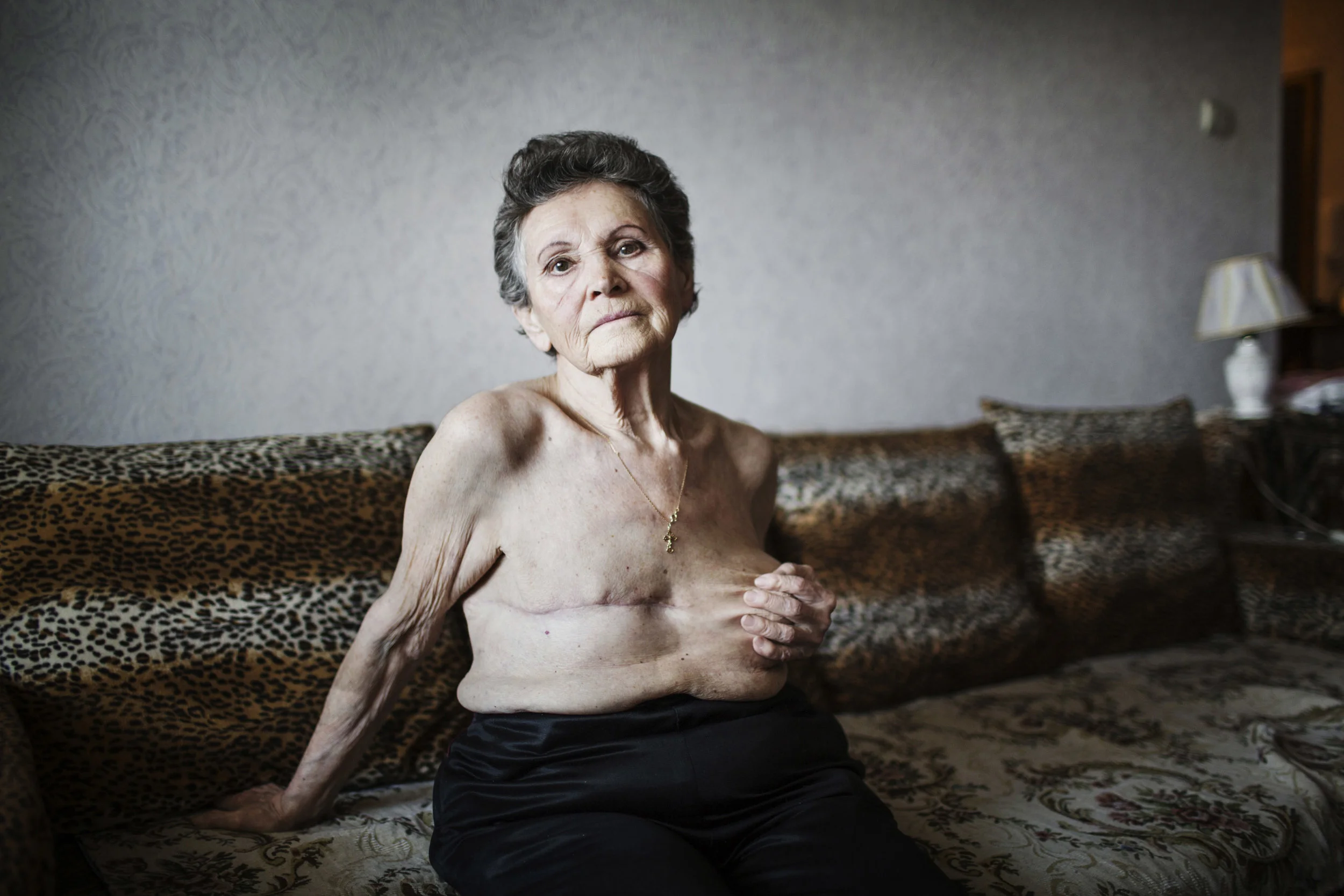
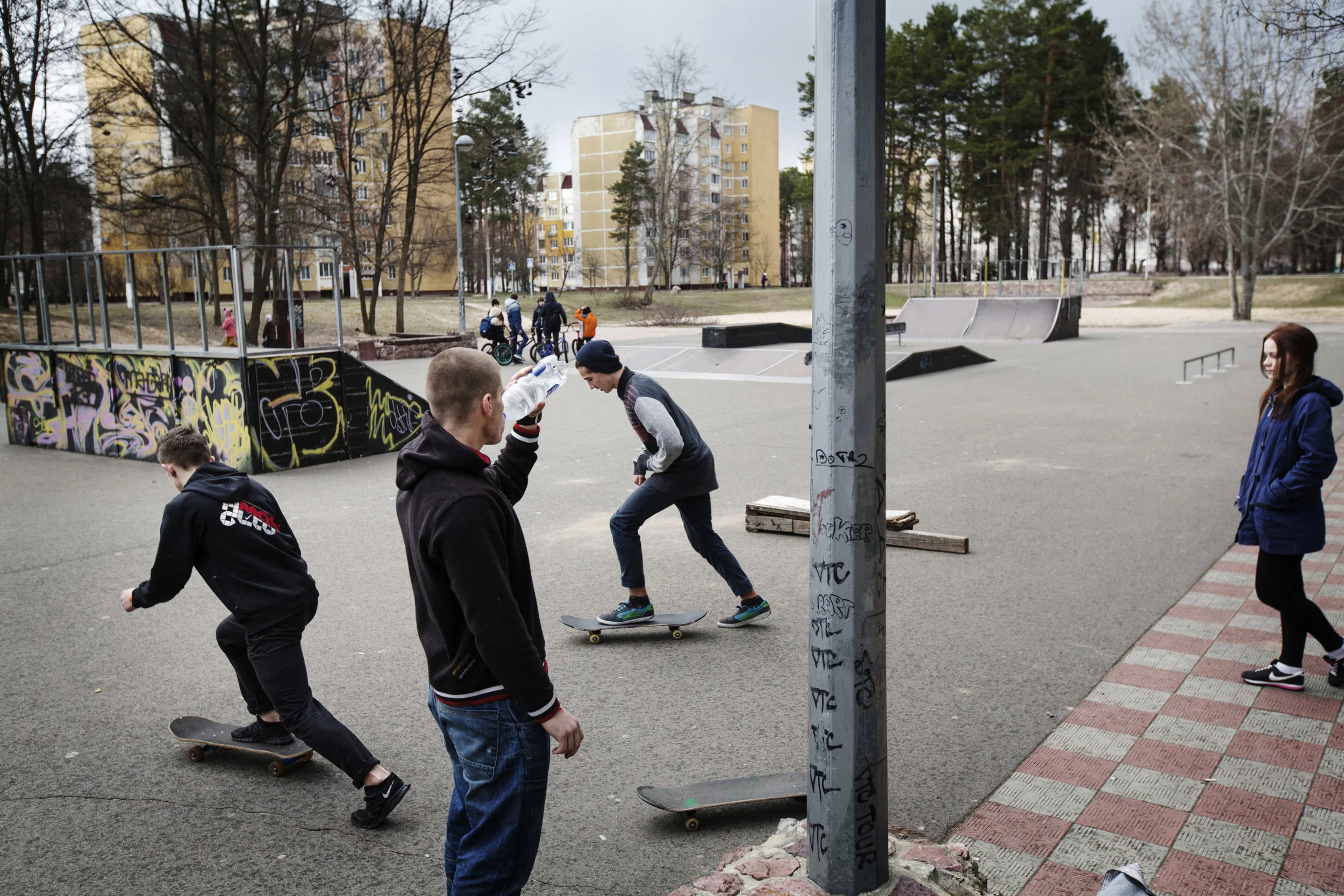


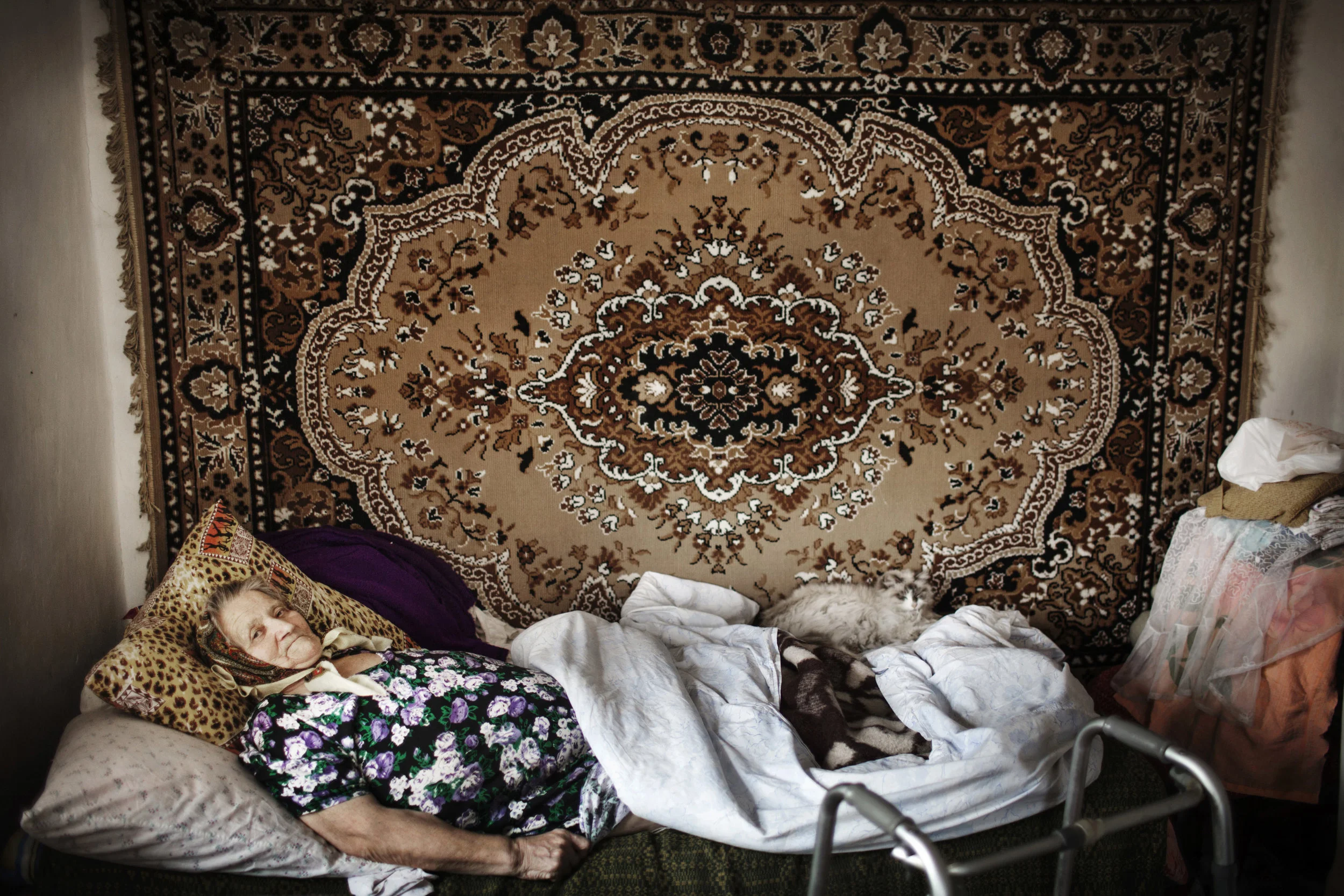

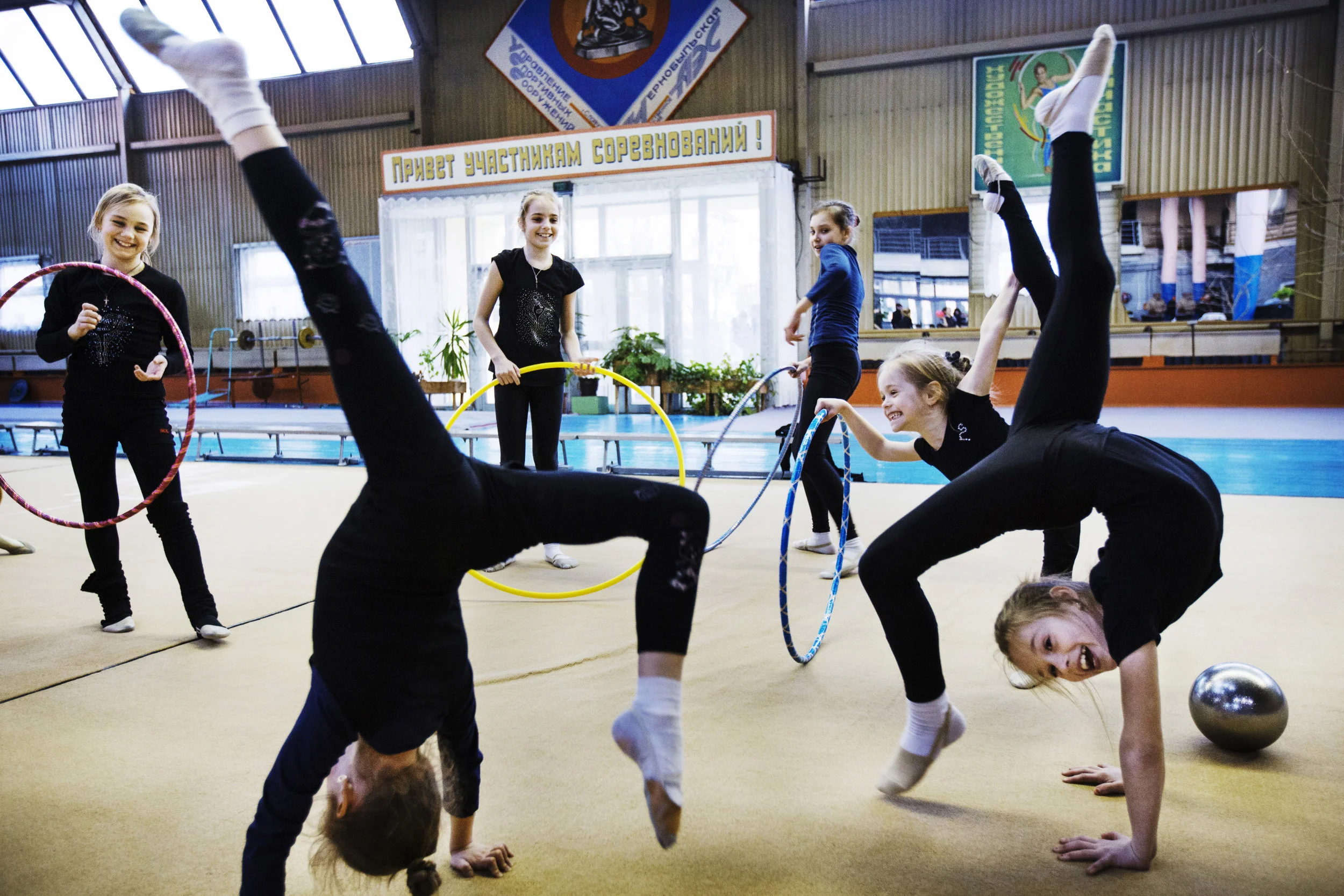

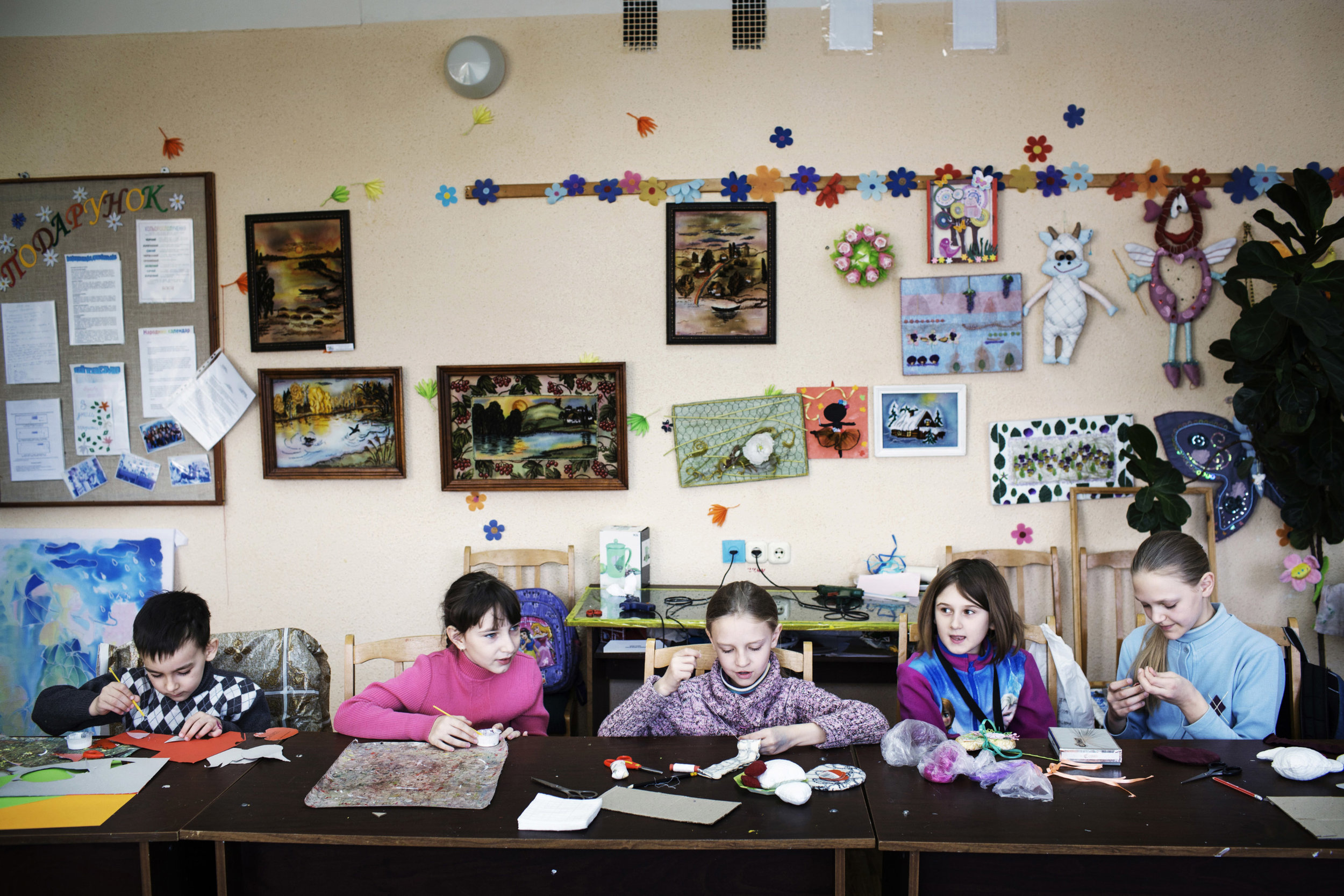




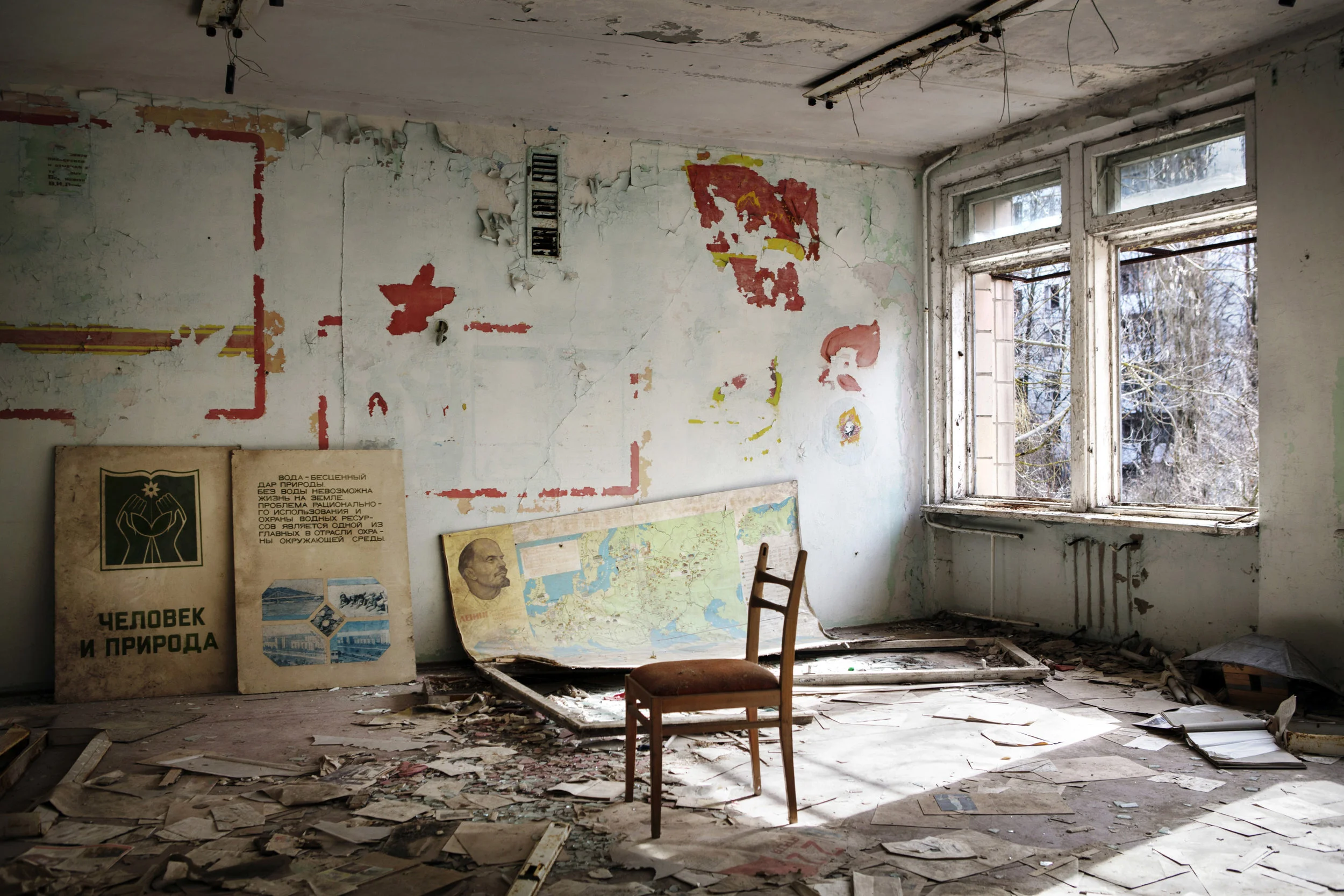



More than 30 years have past since the nuclear disaster in Chernobyl. A vast part of the surrounding area, the so called Forbidden Zone, is and will be uninhabitable for many years to come and is only defied by stray dogs and a few hundred resettlers
However, 40km east, a new city was built to house the evacuees. Slavutych, Ukraine’s youngest city, is now home to around 25 000 people, many whom are working at the Chernobyl Nuclear Power Plant, cleaning up after the previous generation’s carelessness. Ironically, the concern about what will happen when the work is complete and possible unemployment awaiting is much greater than the fear of radiation.

Artëm Vasilec, 27, on his daily commute to Chernobyl. He works on the construction of the sarcophagus, which is being built to prevent radiation from leaking out. Artëm lives in Slavutych, 40km east of Chernobyl, together with his family. Like most of the workers, he worries about the future of his city and what will happen to it when the construction is finished.
– Slavutych will change from a youth town to a city with old people, when the jobs disappear. In one way or another, we are still dependent on nuclear power here.

Children are playing in the neighborhood “Armenia”. Slavutych was built in 1986, as an evacuation city for the people who were forced to leave the area surrounding the nuclear power plant.

Before the meltdown three decades ago, Galina Guslina lived in Chernobyl, working at the nuclear power plant. Last year she discovered a tumor in one of her breasts. And she is not alone. Many of her colleagues have died of cancer. “One friend passed away yesterday. But no one can officially prove that it is linked to the disaster, the authorities do not want to take responsibility. It is a disgrace for Ukraine, "she says.

– None of us have ever been to Chernobyl. We never think about radiation, it's an old problem, says Dimitri (16) who lives in Slavutych, a city 40 km east of the nuclear power plant.

“The red forest” is one of the most radioactive areas in the Forbidden Zone. The forest was named after the color that emerged in the pine trees after they died from too much radiation

Olga is celebrating her 78th birthday in her home in Kopovate, a small village in the Forbidden Zone. She is one of a few hundred who have returned after the the nuclear disaster in 1986.

Olga is a so called resettler, who has returned to the Forbidden Zone, after the nuclear disaster. She is having a hard time to walk. For her 78th birthday she is wishing for better health.

The mini bus, with produce, usually comes once a week. The 18 inhabitants of Kopovate are so called resettlers, who have chosen to return to their homes, despite the authorities’ advice against it. They are all older women.

A grouper of children in Slavutych are practicing gymnastics. A third of the city’s inhabitants are under 14 years old.

In the center of Slavutych a memorial for those who died in the nuclear disaster in 1986 is being restored.

When I grow up I want to be a jewelry designer, says Darina, 9 (middle). A third of the people living in Slavutych are under 14 years old. Most parents are working at the Chernobyl Nuclear Power Plant. Many worry about the future and what will happen to the city when the construction to prevent radiation from leaking is finished.

A third of the people living in Slavutych are under 14 years old. Most adults are working at the Chernobyl Nuclear Power Plant. Many worry about the future and what will happen to the city when the construction to prevent radiation from leaking is finished.

Slavutych was built in 1986, as an evacuation city for the people who were forced to leave the area surrounding the nuclear power plant.

– Those who were evacuated from Pripyat were often called "Chernobyl hedgehogs", a nickname for nuclear refugees in the Soviet Union. We were considered contagious and dangerous. Today, many of us work with the dismantling of the plant. Who else will do it, if not us who were involved in the disaster? says Aleksandra

Today Pripyat has been turned into a tourist attraction. Bus trips are arranged and groups are being taken around by guides.

The evacuation of Pripyat began late afternoon the day after the disaster. Authorities told the 50 000 residents to pack for three days. Today it is a ghost town, apart from stray dogs and guided tourist groups.